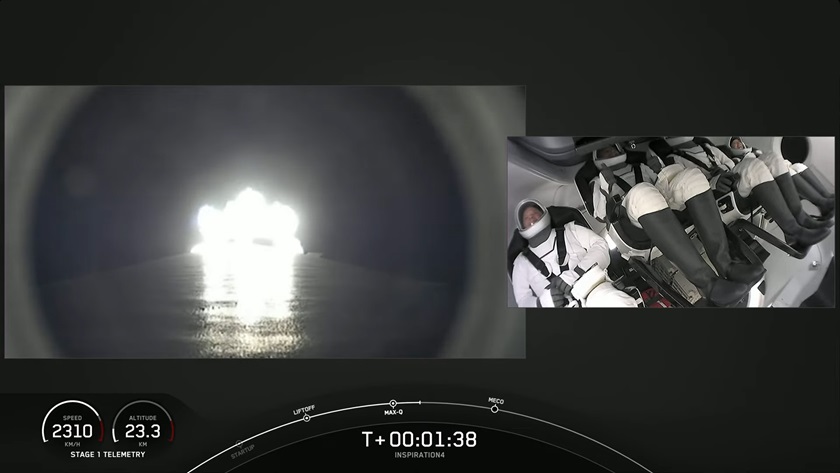First all-civilian crew reaches orbit
SpaceX launches Inspiration4 mission
A crew of four civilians led by an AOPA member and longtime pilot orbited Earth at an altitude far above the International Space Station following a launch into history from the Kennedy Space Center in Florida on September 15.
After inserting at a low orbit, a series of rocket burns lifted the Dragon spacecraft to an altitude of 575 kilometers, higher than humans have flown since NASA space shuttle astronauts repaired the Hubble Space Telescope, which orbits 540 kilometers above the planet, in a series of ambitious engineering and spaceflight feats. The International Space Station orbits at 420 kilometers. Isaacman may have reached space after fellow billionaires Jeff Bezos and Richard Branson, but Bezos (accompanied by longtime pilot Wally Funk) reached his apogee at 107 kilometers before falling back to Earth, and Branson’s Virgin Galactic launch reached a maximum altitude of 86 kilometers. (That July 11 flight is now being investigated by the FAA for possible airspace violations, and the Virgin Galactic spacecraft appears to have strayed off course, though it landed safely.)
Visitors to the SpaceX website were able to view the Dragon’s orbit (presumably based on actual telemetry) as the Inspiration4 crew took in what must be an incredible view through a spherical window installed under the capsule’s nosecone, though that could not be immediately confirmed. Video telemetry dropped out as the capsule reached its initial orbit, to the disappointment of webcast viewers who had been promised an amazing sight. The mission lifted off at 8:02 p.m. Eastern time on September 15, and was scheduled to continue orbiting for three days before returning.
While the recent suborbital, high-profile flights lasted only a few minutes, one thing the billionaires appear to have in common is a lack of much to do beyond admiring the view. SpaceX designed the Dragon to be highly automated, including when it docks with the International Space Station, so even the trained NASA astronauts who did just that on previous flights had far fewer tasks than Apollo or space shuttle astronauts, who stayed pretty busy running checklists and manipulating controls. During the Dragon launch, the four astronauts alternated between fist bumps and thumbs-ups, but otherwise had their hands resting until it was time to raise their visors.





